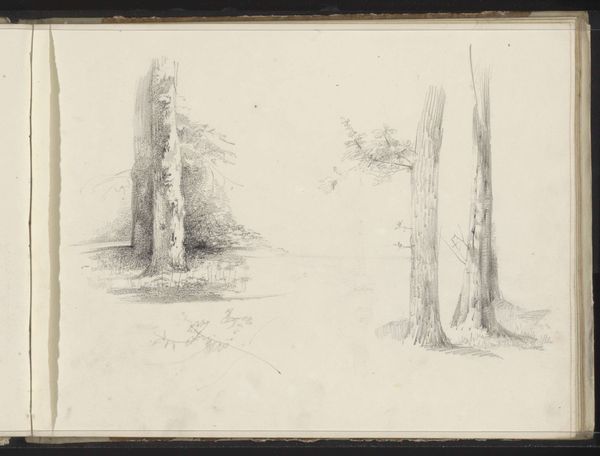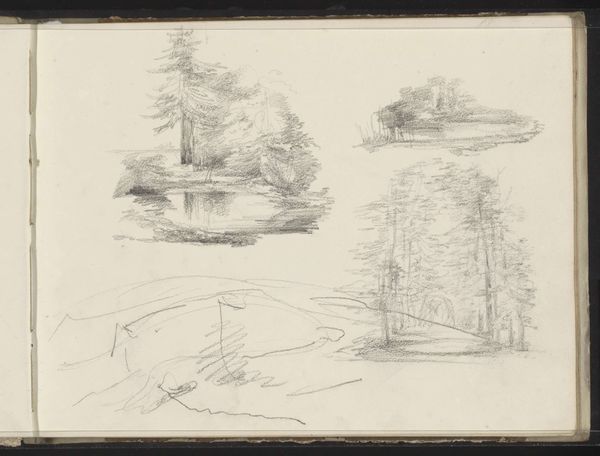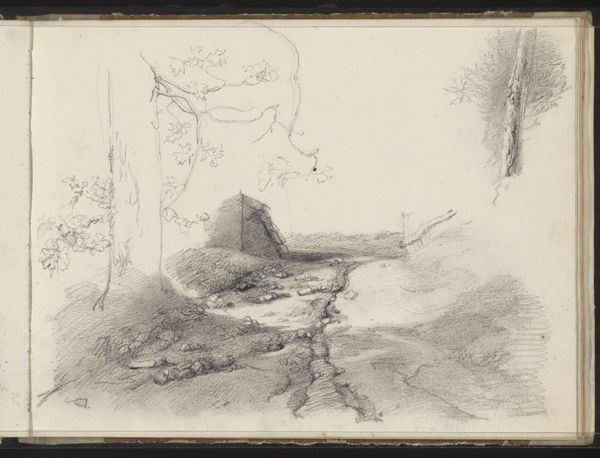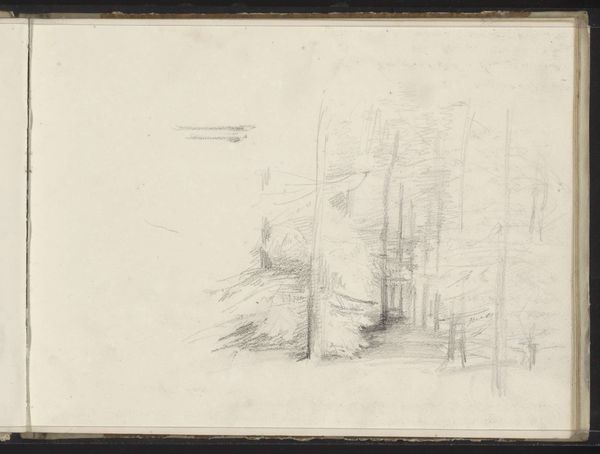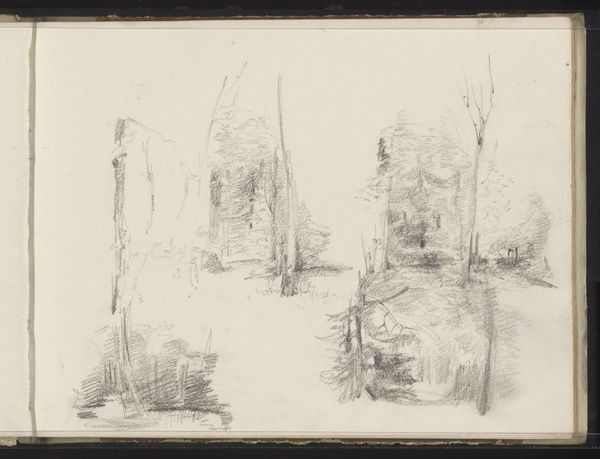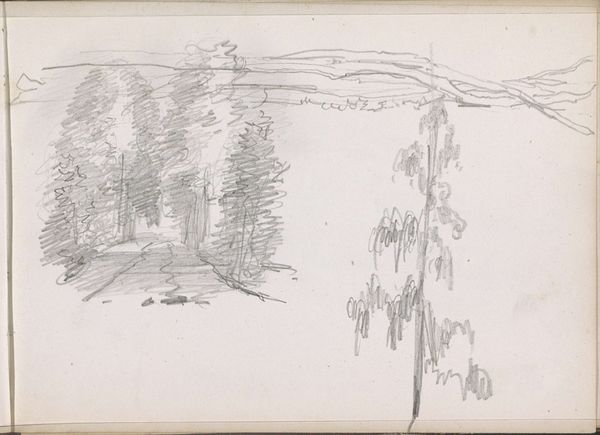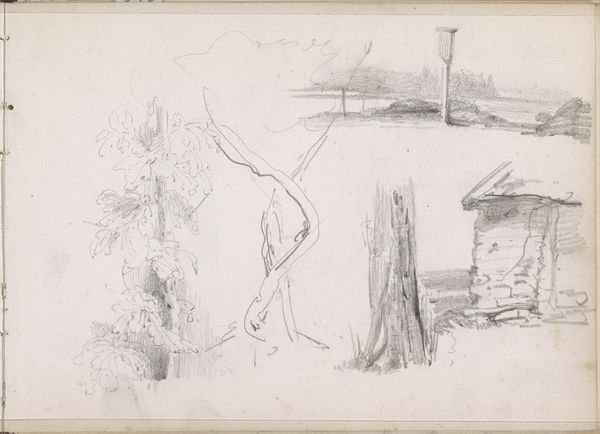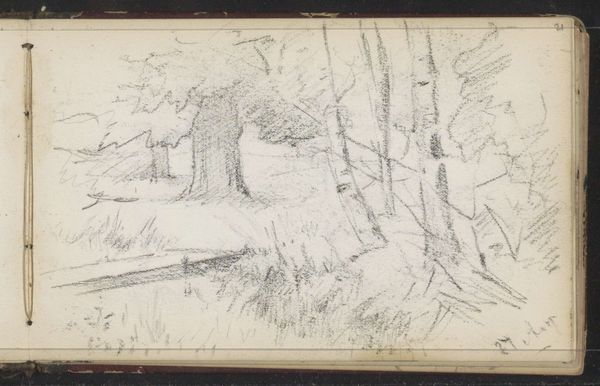
drawing, pencil
#
drawing
#
pencil sketch
#
landscape
#
forest
#
pencil
#
watercolor
#
realism
Copyright: Rijks Museum: Open Domain
Editor: So, this is Maria Vos's "Bosgezicht en boomstammen," which roughly translates to "Forest View with Tree Trunks," dating from 1834 to 1906. It's a pencil drawing, almost like a collection of sketches within one page. The forest scene itself feels quite immersive, despite being a sketch. What do you see in this piece beyond just the trees? Curator: I see a representation of the complex relationship between women artists and the natural world during the 19th century. Vos, as a female artist, was engaging with the landscape tradition, but potentially also subverting it. Editor: How so? Curator: Consider the era. Social norms often confined women to domestic spaces, and while landscape painting was considered acceptable, their access to formal training and exhibiting opportunities was often limited. This drawing could be read as Vos claiming her space, quite literally, within the artistic landscape, but also metaphorically, within the male-dominated art world. The sketches feel like a series of intimate studies, a quiet rebellion. Does the sketch-like quality make you think about access differently? Editor: That's a great point. It makes me consider it less as a grand statement and more of a personal exploration, a very subtle form of activism, perhaps? Curator: Exactly! And look at the composition – the dense forest seems almost impenetrable. Perhaps a visual metaphor for the obstacles she faced as a woman artist, whilst the light filtering through might signify hope and resilience. This work isn't simply a pretty picture; it's a historical document reflecting gendered power dynamics. Editor: I never considered it that way. It's interesting to think about her quiet resistance, sketched so delicately. Curator: Precisely, and it invites us to question whose perspectives are traditionally included and excluded within art historical narratives.
Comments
No comments
Be the first to comment and join the conversation on the ultimate creative platform.


